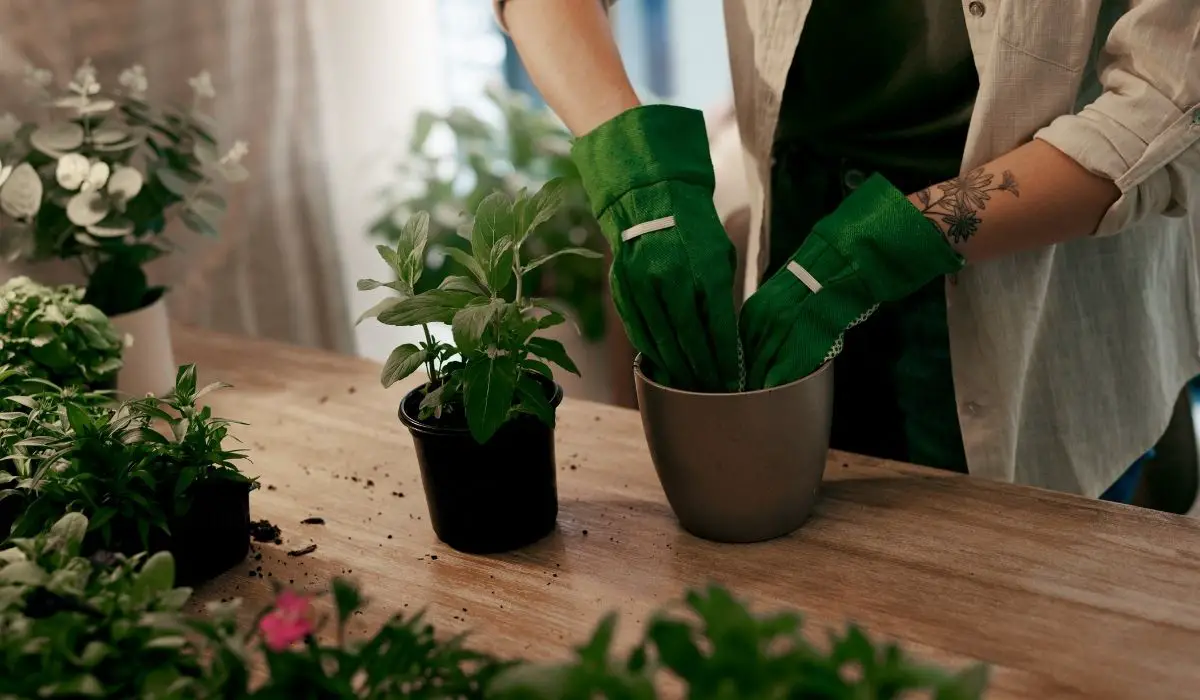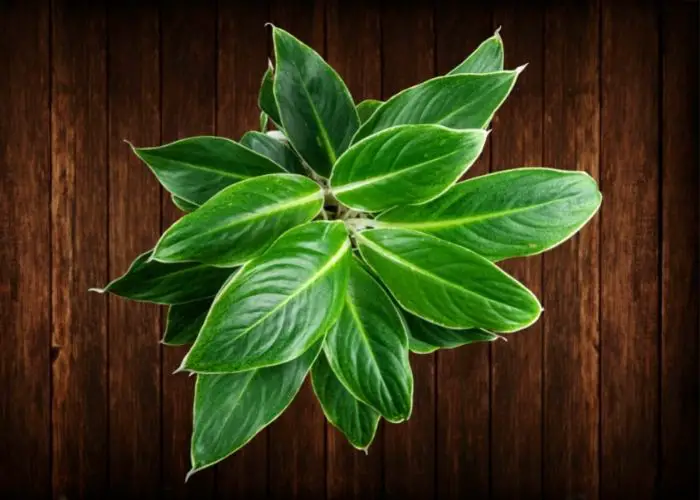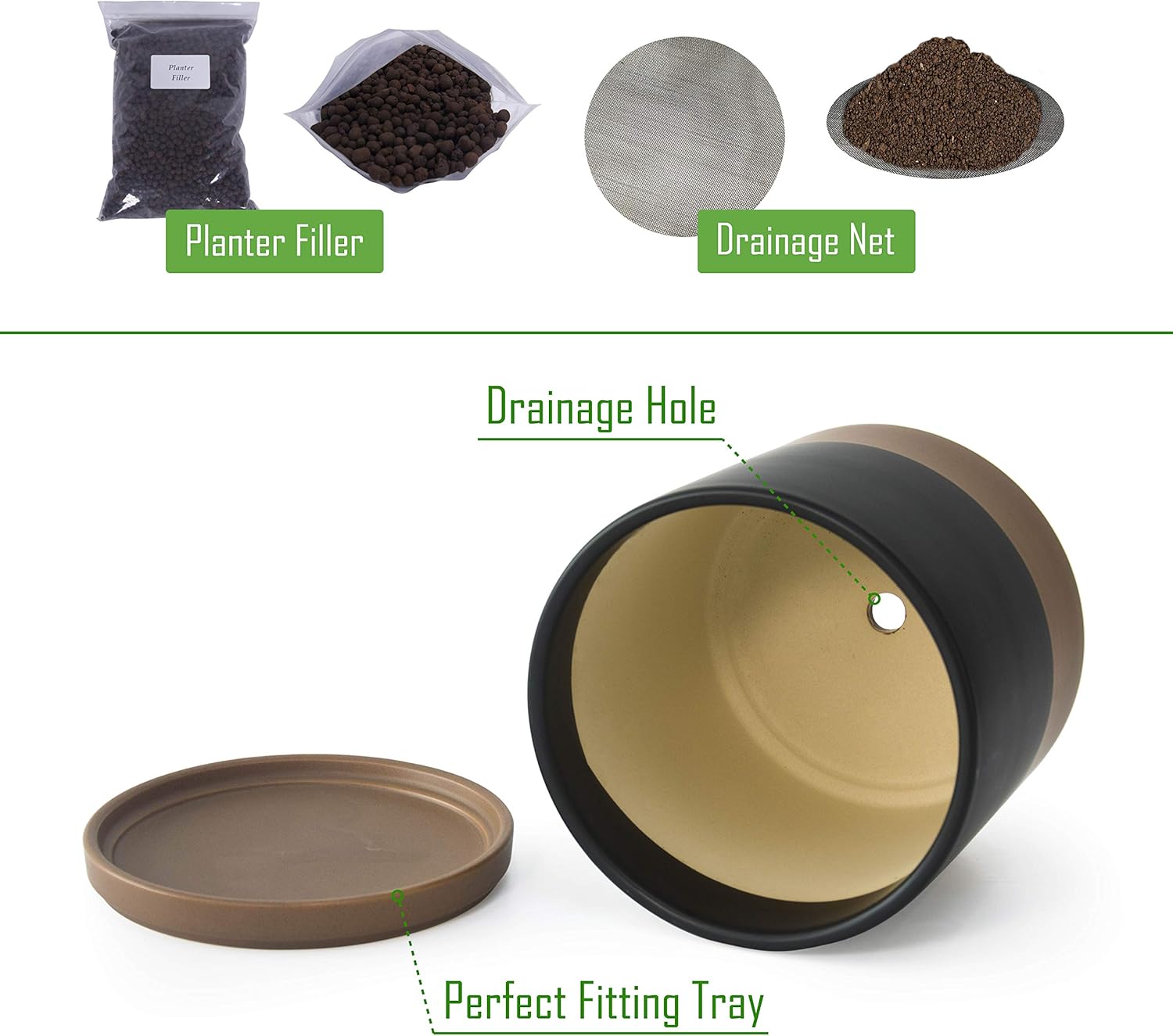Last Updated on February 7, 2023 by Griselda M.
Plants that don’t need drainage holes are a busy person’s best friend and the ideal decor as they seamlessly fit on each shelf, table, or window. Pots with drainage holes come with saucers and can create a mess more often than not, especially if you have pets around. Pots without drainage holes look better and are far easier to move.
But you can’t put just any plant in these pots. Some plant owners prefer soaking instead of watering, so drainage is essential. The best way to find out which plants don’t need drainage holes is to read below. We guarantee some will surprise you!
Outdoor Plants That Don’t Require Drainage
If you want to know which outdoor plants that don’t require drainage, then we have a list that will be useful to you. These low-maintenance plants are ideal if your love gardening but don’t have the extra time to efficiently manage your garden. Believe it or not, there are several varieties that you can choose from in this respect.
Listed below are a few hardy plants that do well in moist conditions:
The Snake Plants
Snake plants grow well in tropical plant soils or standard potting soil when planted outdoors. These plants don’t require drainage as they thrive in hot climates with moist soil. An addition of perlite or peat moss to the growing medium will also increase water retention, which is great for these effective air-purifying plants to thrive.
The Dracaena Plant
Dracaena plants are amongst the easiest outdoor plants to care for, and they don’t require drainage when planted. These plants thrive in outdoor gardens with minimal care. But, when growing them in your yard, it is best to keep an eye on them from time to time. This is because, although they are quite hard, they are susceptible to diseases and pests. If this is the case, then making use of horticultural insecticides that are environmentally friendly will eliminate the problem.
The Coleus Plant
Coleus plants are exceptional growers that thrive in consistent moisture-rich soil. These plants don’t need drainage because their roots are compact and therefore prefer a wet environment. Neutral to slightly acidic soil with a pH of 6.0 to 7.0 is ideal for coleus plants.
The Croton Plant
Croton plants are quite hardy and do exceptionally well without drainage. Although these plants don’t have a great demand for large amounts of water, soil moisture is required for them to grow their best. Therefore, to maintain a moist environment, misting crotons frequently is recommended to maintain a suitable environment.
Indoor Plants That Don’t Need Drainage
Many indoor plants don’t need drainage. Although maintaining most houseplants does require work, some hardy varieties do well with minimal care or effort. Underwatering and overwatering are among the main concerns when growing houseplants. This is because too much or too little moisture can have damaging results that can flaw your efforts.
Well-draining soil is usually the first thing that gardeners look for when growing plants in pots. Aside from that, drainage holes in plant containers are also sought after to prevent root rot and other aspects in houseplants. But, for those who want to see their indoor garden thrive without an exorbitant amount of plant care demands, then houseplants that don’t need drainage would be the best option for you.
Here’s a list of hardy indoor plants that don’t require drainage:
- Dracaena Sanderiana or Lucky Bamboo Plant
- Chlorophytum Comosum or Spider Plant
- Tillandsia Usneoides or Spanish Moss Plant
- Nerphrolepis Cordifolia ‘Duffii’ or Lemon Button Fern
- Aglaonema spp. or Chinese Evergreen
Herbs That Don’t Need Drainage Holes
Herbs that don’t require drainage holes include some of the most sought-after varieties used across the globe. Amongst them are dill, cilantro, mint, chamomile, parsley, thyme, lemon balm, and tarragon, which are widely grown. Unbelievably, these plants thrive in damp conditions and prefer it over dried-out soils, although they don’t necessarily require excessive amounts of water.
Therefore, it is advisable to plant the above herbs in a container that does not have drainage holes. Not only will you be able to maintain the soil moisture levels effectively, but it is also much easier to keep an eye on it without the worry of it drying out completely. A layer of pebbles at the indie base of the plant pot can also be used to give you peace of mind that your herb roots are not saturated.
Why Are Drainage Holes Important
When picking a plant or a vegetable, you often find that it requires well-draining soil. The soil components need to let the excess water go through and not withhold it. The same method applies to the pots.
Drainage holes are ideal for plants that need thorough soaking, like most succulents. These plants sometimes get watered only once every 2 weeks, but the whole pot gets submerged underwater. The point of this process is to moisten all the soil. The holes in the bottom of the pot then let the excess moisture seep out.
But some plants don’t need drainage holes. Some plants are okay with sitting in moist environments. You can even put a layer of gravel and pebbles at the bottom to mimic drainage, so the roots won’t stay in soggy soil.
However, some plants don’t need drainage holes and develop just fine. They tolerate wet soil, and some of them grow in plain water.
Plants That Don’t Require Drainage
We’ve shortlisted some luscious plants with decorative foliage, different sizes, and even one fruit! Pick the next centerpiece from the plants that don’t need drainage holes below.
Strelitzia (Bird Of Paradise)
Strelitzia is a tropical flower that can grow both outdoors and indoors. They’re tall blooming plants with gorgeous foliage and specific bloom resembling an orange bird with open wings. The Strelitzia can grow up to 3 feet and develop ideally without drainage.
Crotons
Crotons are colorful, hardy, subtropical plants that intake moisture through their large leaves. It can go extended periods without water, but it can easily survive lower temperatures. It grows up to 2 feet in height and width, and it blends in perfectly as a houseplant or as part of your landscape.
Oleander
The oleander plant is an evergreen shrub that thrives in standing water and develops colorful flowers. However, it’s highly poisonous, so not recommended if you’re living with kids or pets.
Aglaonema (Chinese Evergreen, Red Aglaonema)
Aglaonema plants are one of the plants that don’t need drainage holes as their drought tolerant. The red aglaonema is a great indoor plant as it’s compact, while the aglaonema Maria, or Chinese evergreen grows up to 15 feet.
Dieffenbachia (Dumb cane)
Dumb cane is a hardy plant that can survive in almost all conditions except direct light. The stem contains calcium oxalate crystals that can temporarily leave you speechless if you chew on the stem, hence the name.
Schefflera
Schefflera can grow in water just as well as in soil. However, it won’t develop its full potential in the water. You can combine pebbles and sand and plant it or put some cutting in plain water. It’s a tropical plant, so it enjoys full sun.
Maidenhair Fern & Kupukupu Fern
The natural environment of ferns is moist woodlands, so they’re the model plants that don’t need drainage holes. They do well with watering once a week when potted inside. When outside, partial shade and regular rain will keep them thriving.
Lucky Bamboo
There’s barely an office without a bamboo stalk hanging in a vase, so you’re pretty aware of this plant. It grows in water that needs to be changed every 7 to 10 days. Beware if you’re a pet owner as it’s poisonous to felines.
Set of 2 Plants Pot, 6 Inch Ceramic Planter Pot for Plants with Drainage Hole and Saucer
Jade
The most sought-after plant in feng shui is among the plants that don’t need drainage holes. The money tree or Jade is a type of succulent which means it’s drought-tolerant and resilient. Its maximum height is 5 feet and can live up to 100 years!
Pineapple
Have you tried to grow a pineapple at home? Now you can! Remove the crown of the fresh pineapple and submerge the lower section in water. Provide some support so the crown won’t drown. It will grow roots in around 10 days!
How to Care for Plants That Do Not Need Drainage
One thing is sure – you can overwater a pot without drainage holes. No matter how hardy or resilient your plant is, continuous overwatering leads to death.
There are a few different steps for growing plants that don’t need drainage holes.
Start by adding a draining layer at the bottom. You could use gravel, pebbles, pumice, or even charcoal. Avoid styrofoam as it can release toxins in the soil and absorb moisture. The drainage layer helps to keep the roots away from the accumulated water and prevents root rot.
Water sparingly and slowly, following how damp the soil gets with each sip. Don’t use pots without drainage holes for your outside plants. This will lead to overwatering every time it rains.
Final Say: Plants That Don’t Need Drainage Holes
Got your hands on gorgeous terracotta pots that you can’t seem to use with any of your plants? It’s time to get plants that don’t need drainage holes. The list is extensive, but you can notice one thing in common for most of them. They’re either tropical or sub-tropical plants and succulents.
Some plants like bamboo thrive in water only, while others can live without drainage holes but have to be watered sparingly. Make sure to plant them correctly, providing a draining layer at the bottom. If you’re not ready for a non-draining pot, cheat and use it as a cachepot!
What plants don't need drainage holes?
Most succulents, some tropical and sub-tropical plants, are among the most common plants that don't need drainage holes. Some examples are aloe vera, snake plant, spider plant, jade, ferns, and Schefflera.
What herbs don't need drainage holes?
You can grow plenty of herbs in water, mostly from cuttings. The best choices are rosemary, basil, thyme, oregano, sage, mint, and tarragon.
Avoid dill and cilantro as they don't develop roots in water.
Mary is a passionate gardener who loves spending her days getting her hands dirty and nurturing her plants. She‘s an avid reader of gardening magazines and is always looking for new ways to make her garden thrive. When not outside tending to her plants, Mary can be found inside reading up on the latest gardening trends, comparing notes with fellow gardeners, and finding the perfect pottery planter for her next planting project.




